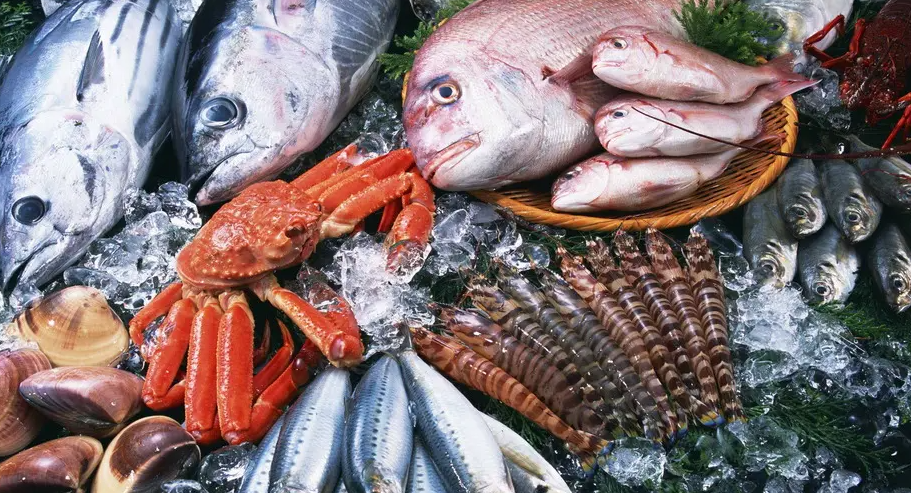China is still the largest seafood exporter! For more information on export to China, please call SINOLOBEN, service Email: sinoloben@sloben.comsn 90% sold to China.

From TheFishSite, June 10 - According to the latest seafood trade map and report compiled by Rabobank Rabobank, Rabobank seafood analyst Gorjan Nikolik notes that the world is recovering from the epidemic, and in the case of seafood, the new map is a significant recovery compared to the previous map released in 2019.
China remains the largest exporter of seafood, which surprised analysts who had predicted for some time that China's seafood exports would decline, despite its relatively small seafood-producing region, the country's large number of seafood-loving consumers and the growing wealth of its people, so China is more than just a natural seafood exporter.
Gorjan Nikolik noted that while China's seafood exports decline slightly in 2020, they rebound again in 2021 to reach $21 billion, twice the value of EU seafood exports and four times the value of U.S. exports.
Driving the value of China's seafood exports are mainly farmed crustaceans such as shrimp and crayfish, while a large portion of the value in wild-caught comes from reprocessed white fish, such as Alaskan cod.
Norwegian seafood ranked second in terms of export value, with $13.5 billion in 2021, up from $9 billion in 2015, mainly due to higher prices for farmed Atlantic salmon in the 2016-2018 period.
Gorjan Nikolik noted that Ecuador's exports are also noteworthy, with shrimp product exports increasing from $3.5 billion in 2015 to $7.1 billion in 2021, more than doubling in value in six years due to the country's increased farmed shrimp production.
On the other hand, imports from the U.S., China, the EU and the U.K. total $80 billion in 2021, accounting for about 50% of total seafood trade. Although the EU countries and the UK remain the largest seafood importers, importing more than $34 billion worth of seafood in 2021, they have grown at a compound annual growth rate of just 2% since 2013, compared to 6% and 10% for the US and China respectively over the past five years, both double the value of their imports.
Gorjan Nikolik noted that in both cases, quality seafood has helped drive the growth in the value of imports, supporting Rabobank's long-held theory of growing demand for Chinese seafood.
China's seafood imports rose from $8 billion in 2015 to $17 billion in 2021, surpassing Japan's imports in 2020, which currently stand at $14 billion. This growth was driven by shrimp, fishmeal, crab and salmon, all of which showed double-digit year-over-year growth and together accounted for 94 percent of import growth.
Only the EU, the UK and the US are larger seafood importers than China. The value of EU imports rose slightly from $34.6 billion in 2018 to $34.9 billion in 2021, after falling to $31.7 billion in 2020. The U.S. figure rises from $22.6 billion in 2015 to $28.1 billion in 2021, a reflection of the strong U.S. economy, driven largely by increased imports of salmon, shrimp, crab and lobster, which account for 91 percent of total new imports.
As the map shows, U.S. shrimp, salmon and crab imports will grow at a CAGR of 7.1%, 10.3% and 19%, respectively, from 2016-2021.
Gorjan Nikolik draws attention to some of the more important trade flows listed on the map, the largest of which is the "$8.7 billion salmon trade flow," which extends from Norway to the EU via Denmark, Germany, the Netherlands, France and Spain.
From 2013 to 2021, China's imports will grow at a CAGR of 4.4% in volume and 10.1% in value, highlighting a shift in demand for more expensive forms of seafood protein. Meanwhile, the U.S. experienced a CAGR of 7.1% from 2016-2021, with salmon up 10.3%, crab up 19% and lobster up 17%.
High-value species such as shrimp and salmon have done very well since 2013, with volume CAGRs of 6% and 2%, and value CAGRs of 3.3% and 2.8%, respectively. High-value proteins such as beef, shrimp and salmon fared better during the epidemic, with year-over-year trade growth of 16%, 17% and 20%, respectively. The authors believe this trend will continue unless there is a global economic recession.
Consulting service for China's imports & exports, please contact us.
Ms. Linda Li
0086(0)21 3538 3306
sinoloben@thecustoms.com.cn
As food importer & food distributor based in Frankfurt and Shanghai, Sinoloben Europa Trading GmbH helps client export to China and bring your food products to International Expo, e.g. China International Import Ex
热品推荐